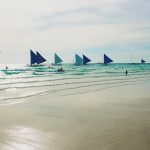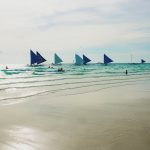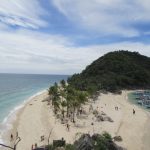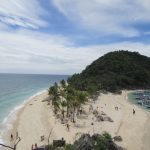Download links
How to install Discover the Beauty of Palawan: A Tropical Paradise APK?
1. Tap the downloaded Discover the Beauty of Palawan: A Tropical Paradise APK file.
2. Touch install.
3. Follow the steps on the screen.
Description
Palawan, often referred to as the last frontier of the Philippines, is a stunning archipelago that captivates visitors with its breathtaking landscapes and rich biodiversity. Stretching over 1,700 kilometers, this province is home to more than 1,700 islands and islets, each offering unique experiences and natural wonders. The allure of Palawan lies not only in its picturesque scenery but also in its commitment to preserving the environment and promoting sustainable tourism.
With its pristine beaches, crystal-clear waters, and lush rainforests, Palawan has earned its reputation as a tropical paradise that attracts travelers from around the globe. The island’s geographical diversity contributes significantly to its charm. From towering limestone cliffs to serene lagoons, Palawan’s topography is a feast for the eyes.
The region is also characterized by its unique ecosystems, which include coral reefs, mangroves, and tropical forests. This ecological richness makes Palawan a haven for nature lovers and adventure seekers alike. As one of the most biodiverse regions in the world, it is home to numerous endemic species, making it a focal point for conservation efforts.
The combination of natural beauty and ecological significance positions Palawan as a must-visit destination for anyone seeking an escape into nature’s embrace.
Key Takeaways
- Palawan is a tropical paradise known for its stunning beaches, breathtaking underwater world, lush rainforests, diverse wildlife, and rich cultural heritage.
- The beaches of Palawan, including El Nido and Coron, are renowned for their pristine white sands, crystal-clear waters, and dramatic limestone cliffs.
- Palawan’s underwater world is a diver’s paradise, with vibrant coral reefs, diverse marine life, and the opportunity to explore sunken Japanese warships from World War II.
- The lush rainforests of Palawan are home to unique flora and fauna, including the Palawan peacock-pheasant and the Palawan hornbill.
- Palawan’s rich cultural heritage is reflected in its traditional villages, indigenous tribes, and ancient cave paintings, providing a glimpse into the island’s fascinating history.
- Sustainable tourism practices are crucial for preserving Palawan’s natural beauty and biodiversity, including efforts to protect marine life, conserve forests, and support local communities.
The Stunning Beaches of Palawan
Palawan boasts some of the most beautiful beaches in the world, each with its own distinct character and charm. El Nido, often hailed as the crown jewel of Palawan’s beaches, features dramatic limestone formations that rise majestically from the turquoise waters. The area is dotted with hidden lagoons and secluded coves, making it a popular spot for island-hopping tours.
Visitors can explore the enchanting Small Lagoon and Big Lagoon, where they can kayak through crystal-clear waters surrounded by towering cliffs. The vibrant marine life in these areas adds to the allure, as snorkelers and divers are treated to a kaleidoscope of colors beneath the surface. Another gem in Palawan’s beach collection is Coron, known for its stunning white sand beaches and crystal-clear lakes.
Kayangan Lake, often regarded as one of the cleanest lakes in Asia, offers a serene escape for those looking to unwind amidst nature. The surrounding hills provide panoramic views that are nothing short of breathtaking. Additionally, Coron is famous for its shipwreck diving sites, remnants of World War II vessels that now serve as artificial reefs teeming with marine life.
The combination of historical intrigue and natural beauty makes Coron a unique destination for both beach lovers and history enthusiasts.
The Breathtaking Underwater World of Palawan
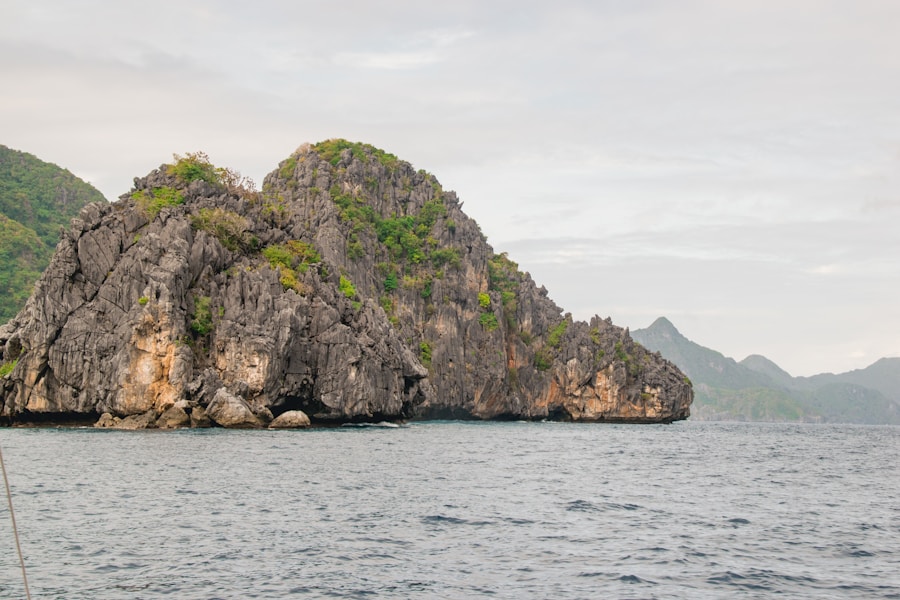
Diving into the underwater realm of Palawan reveals a vibrant ecosystem that is as diverse as it is mesmerizing. The Tubbataha Reefs Natural Park, a UNESCO World Heritage Site, is one of the most celebrated diving destinations in the world. This marine sanctuary is home to an astonishing variety of marine species, including over 600 species of fish and 360 species of coral.
Divers can encounter majestic sea turtles, colorful reef sharks, and even the elusive manta ray while exploring the park’s pristine waters. The park’s remote location ensures that its ecosystems remain largely untouched, providing an unparalleled diving experience. In addition to Tubbataha, other diving spots such as Apo Reef and Malapascua Island offer equally captivating underwater adventures.
Apo Reef, recognized as one of the largest contiguous coral reefs in the Philippines, boasts an impressive array of marine life and stunning coral formations.
Malapascua Island is particularly famous for its thresher sharks, which can be spotted during early morning dives.
The thrill of encountering these magnificent creatures in their natural habitat adds an exhilarating dimension to the diving experience in Palawan.
Exploring the Lush Rainforests and Wildlife of Palawan
| Category | Metrics |
|---|---|
| Size of Rainforest | 1.48 million hectares |
| Number of Wildlife Species | 600 species of birds, 200 species of mammals, 300 species of reptiles and amphibians |
| Endemic Species | 14 endemic bird species, 11 endemic mammal species, and 2 endemic reptile species |
| Popular Wildlife | Palawan peacock-pheasant, Palawan hornbill, Palawan bearcat, and the Palawan pangolin |
| Conservation Status | UNESCO Man and Biosphere Reserve, 35% of the island is protected area |
Beyond its stunning beaches and underwater wonders, Palawan is also home to lush rainforests that harbor an incredible array of wildlife. The Puerto Princesa Subterranean River National Park, another UNESCO World Heritage Site, features a remarkable underground river that flows through a limestone cave system. Visitors can take guided boat tours through this natural wonder while marveling at the unique rock formations and diverse flora and fauna that thrive in the surrounding rainforest.
The park is also home to various species of bats, birds, and reptiles, making it a paradise for wildlife enthusiasts. The rainforests of Palawan are not only rich in biodiversity but also play a crucial role in the local ecosystem. They serve as vital habitats for numerous endemic species, including the critically endangered Philippine crocodile and the Palawan bearcat.
Conservation efforts are underway to protect these unique animals and their habitats from threats such as deforestation and habitat loss. Eco-tourism initiatives have gained traction in recent years, allowing visitors to engage with nature while supporting local communities and conservation efforts. Guided treks through the rainforests provide opportunities to learn about the intricate relationships between species and their environments while fostering a deeper appreciation for Palawan’s natural heritage.
The Rich Cultural Heritage of Palawan
Palawan’s cultural heritage is as diverse as its natural landscapes, shaped by various indigenous groups that have inhabited the region for centuries. The Tagbanua, Batak, and Palaw’an tribes are among the indigenous peoples who call Palawan home. Each group possesses its own unique traditions, languages, and customs that contribute to the rich tapestry of Palawan’s cultural identity.
Visitors have the opportunity to engage with these communities through cultural tours that showcase traditional practices such as weaving, fishing, and hunting. The influence of Spanish colonization is also evident in Palawan’s cultural landscape. Historical sites such as Fort Santa Isabel in Puerto Princesa serve as reminders of the island’s colonial past.
Festivals such as the Baragatan Festival celebrate local culture through music, dance, and traditional games, providing visitors with an immersive experience that highlights the island’s rich heritage.
Sustainable Tourism in Palawan: Preserving a Tropical Paradise

As tourism continues to grow in Palawan, there is an increasing emphasis on sustainable practices aimed at preserving the island’s natural beauty and cultural heritage. Local government initiatives and non-governmental organizations are working together to promote eco-friendly tourism that minimizes environmental impact while benefiting local communities. Efforts include implementing strict regulations on waste management, promoting responsible diving practices, and encouraging visitors to support local businesses.
One notable initiative is the establishment of marine protected areas (MPAs) that safeguard critical habitats from overfishing and pollution. These MPAs not only help preserve marine biodiversity but also enhance local livelihoods by promoting sustainable fishing practices. Additionally, community-based tourism programs empower indigenous groups by providing them with opportunities to share their culture with visitors while generating income for their families.
By prioritizing sustainability, Palawan aims to strike a balance between economic development and environmental conservation, ensuring that future generations can continue to enjoy this tropical paradise. In conclusion, Palawan stands as a testament to nature’s beauty and resilience. Its stunning beaches, vibrant underwater ecosystems, lush rainforests, rich cultural heritage, and commitment to sustainable tourism make it a unique destination that captivates all who visit.
As travelers seek out experiences that connect them with nature and local communities, Palawan remains at the forefront of eco-tourism efforts in the Philippines. By embracing sustainable practices and fostering a deep appreciation for its natural wonders, Palawan continues to thrive as a tropical paradise worth exploring.
If you’re planning a trip to Palawan, you may want to check out this article on Pip Camera – Editor de Fotos 1.5 for some photography tips to capture the beauty of the island. Palawan is known for its stunning landscapes and crystal-clear waters, making it a paradise for photographers. Don’t forget to bring your camera and make the most of your trip to this tropical destination.
FAQs
What is Palawan?
Palawan is an island province in the Philippines located in the Mimaropa region. It is known for its stunning natural beauty, including pristine beaches, crystal-clear waters, and lush forests.
What are the popular tourist attractions in Palawan?
Some of the popular tourist attractions in Palawan include the Puerto Princesa Subterranean River National Park, El Nido, Coron, and the Tubbataha Reefs Natural Park. These destinations offer opportunities for diving, snorkeling, island hopping, and exploring natural wonders.
What is the best time to visit Palawan?
The best time to visit Palawan is during the dry season, which typically runs from November to May. This period offers sunny weather and calm seas, making it ideal for beach activities and island exploration.
How do I get to Palawan?
Palawan can be accessed by air through its main gateway, the Puerto Princesa International Airport. There are also direct flights to El Nido and Coron from Manila. Additionally, ferries and boats are available for travel between the different islands in Palawan.
Is Palawan safe for tourists?
Palawan is generally considered safe for tourists. However, it is always advisable to take standard precautions and be mindful of local customs and regulations. It is also recommended to stay updated on travel advisories before visiting.

